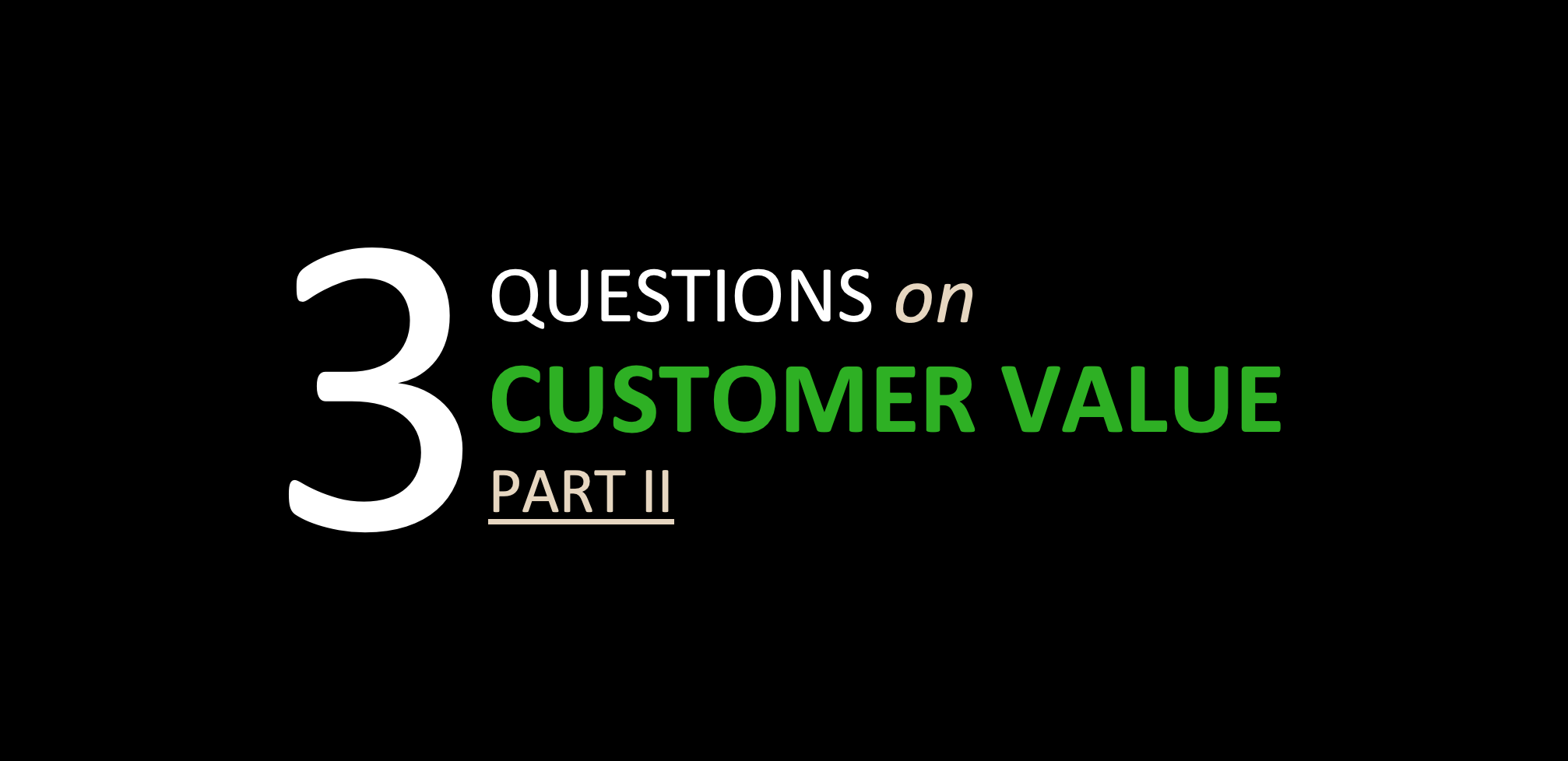Twenty years ago, I had a discussion with venture capital fund founders. At the early stages of the fund, there was disagreement about who the customer of the fund really was.
Some founders believed that the customers were the companies seeking funding and in which the fund invests. They argued that all efforts should be directed towards these companies to ensure their success. Other founders considered the investors who had invested in the fund, aiming for high returns, as the customers.
Who was right?
While the question of who the customer is may seem trivial, especially in B2B business, a more precise definition of the customer can open new opportunities, help save and prioritize, and accelerate, for example, the entry into new markets.
From the perspective of value creation, it is also important that the organization shares a common understanding of the customer. In B2B business, the answer is not always as straightforward as it is in consumer business. The definition of the customer has evolved over the past couple of decades, given that we now work in different value chains. A customer can simultaneously be our competitor and, elsewhere, our collaborator.
To deepen our understanding of the customer, I would start by exploring the question of the customer from four perspectives:
1. Current Paying Customers: Who are our current paying (and profitable) customers? Where do the revenues come from in the short and long term?
2. Value Chain: How does our value chain operate? What roles and actors are involved in the value chain?
3. Segmentation: Can we segment our customer base and potential in a way that allows us to find opportunities to create more value in the market?
4. Decision-Making Roles: Who influences decision-making and whom do we need to influence and how?
Who are our current paying customers now?
To whom do we send invoices, and from where do our customers pay us now? In many organizations, data about paying customers is somewhat incomplete and not easily accessible. Supplementing CRM and integrating data into sales receivables can help a lot.
It’s also essential to ensure that our perception of where customers currently pay us aligns with customers’ perceptions. The quickest and easiest way is to ask customers directly. Often, having someone external to ask can be helpful. Customers may not always want to share all their thoughts directly with representatives of the company, and organizational insiders may also hear answers through their own biases.
Opening the Value Chain
Drawing out the value chain helps to see where and how we create value. Make the exercise simple. It’s more important to do it in overall than to do it perfectly:
- What parts does the value chain consist of?
- Who participates in the value chain, and who contributes to creating value? Are there contributors with whom we are not directly involved, but who play a significant role in our ability to create and produce our business?
- Where in the value chain does value arise for our current customers? Is there something in our value chain that we are not yet selling or cannot turn into cash flow?
- Are we creating value in the value chain for others in addition to our current paying customers? Could we create such value, and for whom?
- What data do we have about the value chain? What data does the value chain produce? How well can we leverage existing data, and what data do we need?
Customer Segmentation
B2B segmentation is more challenging than in consumer business. There are often more decision-makers and influencers, and behavioral data and value drivers are less available or qualitatively incomplete. Most companies settle for combining traditional demographic variables with their own sales ledger calculation. In its simplest form, only the annual billing of a customer is considered.
The strategic goals of B2B customers affect their value drivers. Often, strategies are public, so the information is available to us. What value drivers connect customers? Should we give up some customers to focus resources on customers to whom we can create more value?
Value-based segmentation is worthwhile. It may open-up entirely new ways of understanding the importance of different customer segments to our business, i.e., cash flow, profitability, and developing a competitive advantage.
Customers Have Different Roles in Decision-Making
Also, consider different decision-making roles when answering the question of who our customer is:
- Who prepares the procurement?
- Who uses our services and products?
- Who makes the actual decision?
- Who evaluates and measures collaboration?
Which venture capitalist partners was right?
If the founders had analyzed their value chain and thought about how and for whom value is created in their operations, they would have happily found that both the target companies of the investments, their founders/owners, and the investors who invested in the fund are their customers. Value is created for all of them. All of them buy value. And each of them plays a role in the decision-making process, evaluating the return on value in comparison to other available options.
Unfortunately, the end of the story was not the most beautiful one. The fund did succeed eventually, but the paths of the founders diverged. And perhaps that’s a good thing – for the customers as well.
Want to know the 3rd important question on Customer Value? Read our post here.
